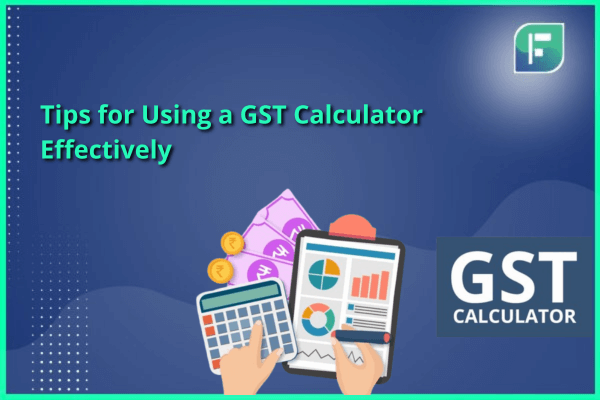GST registration has brought about a revolutionary change in taxation across numerous countries. As businesses deal through this transformative change, it becomes essential to grasp the available tools at their disposal. Among these tools, the GST calculator acts as a digital instrument which is crafted to calculate the GST amount applicable to both goods and services. In this blog, we shall see some tips for using a GST calculator effectively.
The Role of GST Calculator
GST registration has made tax compliance easier for businesses in India. But still finding out what are the liabilities under GST is still tough in the context of India. To address this challenge, the utilisation of a GST calculator emerges as a practical solution. This tool proves to be a straightforward and user-friendly resource, aiding businesses in the accurate computation of their GST liabilities.
What are Some Important Tips for Using a GST Calculator Effectively?
Mentioned below or important tips for using a GST calculator effectively:
Understanding GST Rates
To use a GST calculator, start by first knowing the GST rate structure. GST has four tax levels – 5%, 12%, 18%, and 28%, with some things not taxed. Keeping up with the latest rates for different stuff is important for getting the right numbers.
Putting in the Right Info
Getting the GST calculation right depends on putting in the info accurately. So, make sure you enter all the details – like the invoice amount, GST rate, and type of transaction – correctly into the GST calculator. Mistakes in the info can lead to wrong GST calculations and maybe even penalties. One among the tips for using a GST calculator effectively is to always double-check before using the GST calculator.
Picking the Right GST Calculator
Here choosing which is the right GST calculator is one of the most important choices and tips for using a GST calculator effectively. Also, there are many GST calculator online, but which one is to be used remains tough to understand. Opting for a GST calculator provided by the government is a wise choice to ensure compliance with the rules.
Tracking GST Payments
Finally, among the tips for using a GST calculator effectively is maintaining a vigilant eye on GST payments for businesses. Timely and accurate payments are essential to evade penalties and legal complications. Utilising a GST calculator facilitates effective tracking of payments, helping businesses prevent errors and ensure adherence to regulatory requirements.
GST Calculation Formula
Let us now look at the formula for GST calculation after the tips for using a GST calculator effectively. The calculation of GST using a GST calculator involves two key formulas.
1. To determine the GST amount on a transaction:
GST Amount = (Original Cost * GST Rate Percentage) / 100
2. To find the net price of the transaction by adding the GST amount to the original cost:
Net Price = Original Cost + GST Amount
Intrastate Transaction Formulas
For intrastate transactions, where Central GST and State GST or Union Territory GST apply, the following formulas are employed.
CGST = Applicable GST Rate / 2
SGST/UTGST = Applicable GST Rate / 2
CGST + SGST/UTGST = Applicable GST Rate
Benefits of Using GST Calculator
Mentioned here are some benefits of using a GST Calculator:
1. Time-Saving Efficiency
The utilisation of a GST calculator significantly enhances operational efficiency by saving valuable time. Manual GST calculations are often intricate and time-consuming, posing a potential hindrance to productivity. The calculator expedites the process, allowing businesses and individuals to swiftly and accurately compute their taxes. This time-saving aspect provides the flexibility to allocate resources and attention to other critical facets of enterprise management.
2. Precision and Error Reduction
Accurate GST calculations are necessary to avoid discrepancies in the total amount due. The complexities inherent in GST computations can result in errors when done manually. Employing a GST calculator eliminates this risk, ensuring precision in the calculation process. This not only enhances financial accuracy but also minimises the likelihood of penalties or legal issues arising from inaccuracies in tax reporting.
3. Budget-Friendly Solution
Using a GST calculator is a budget-friendly option for businesses. Instead of hiring an accountant or tax professional just for GST calculations, companies can save a lot of money. The tool also avoids the costs of training employees to manually figure out GST, making it a smart financial choice for businesses of different sizes. Free online calculators add to the cost-effectiveness, making it a wallet-friendly option for a wide range of users.
5. Following GST Rules
The GST calculator is a reliable tool for making sure businesses stick to GST regulations. By automating the calculation process, the calculator helps businesses stay in the loop with the latest GST rates and rules. This proactive approach reduces the risk of not following the rules, avoiding possible penalties and legal issues.
Final Thoughts
Employing a GST calculator effectively requires a comprehensive understanding of the GST rate structure, ensuring accurate data input, and selecting an appropriate calculator. Familiarity with the diverse GST rates, whether for intrastate or interstate transactions, is crucial for precise calculations. Accurate data entry is paramount to avoid penalties and legal issues, making it essential to double-check information before utilising the calculator. Choosing the right GST calculator, whether free or fee-based, is vital for reliable and user-friendly functionality. Finally, maintaining a vigilant track of GST payments ensures timely compliance and mitigates potential errors. These tips for using a GST calculator effectively contribute to harnessing the full potential of a GST calculator, facilitating simplified tax calculations and enhancing overall financial efficiency for businesses.






